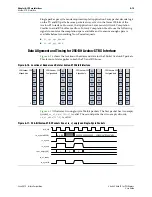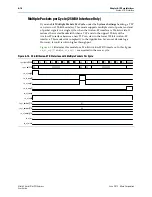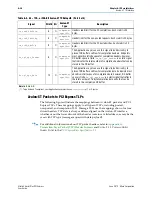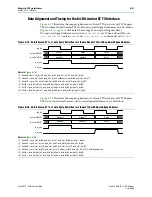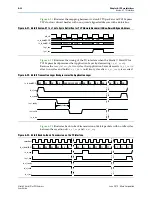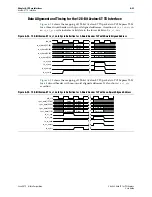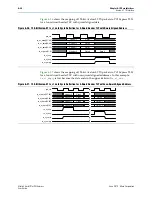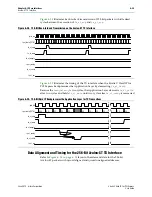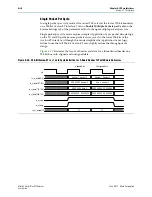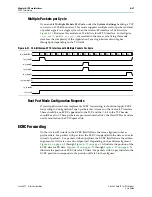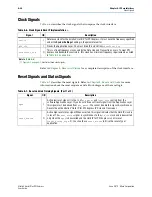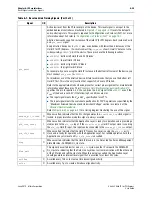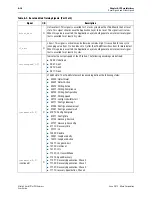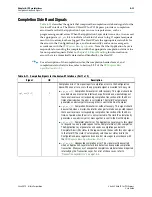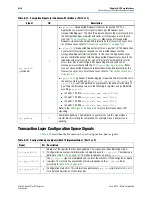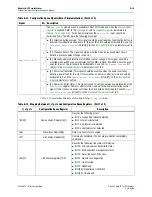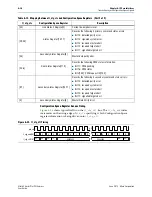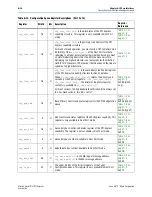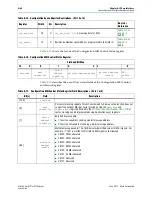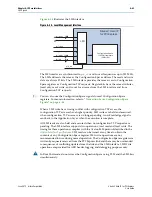
Chapter 6: IP Core Interfaces
6–29
Reset Signals and Status Signals
June 2012
Altera Corporation
Stratix V Hard IP for PCI Express
pin_perst
I
Active low reset from the PCIe reset pin of the device. This reset signal is an input to the
embedded reset controller as illustrated in
. It resets the datapath
and control registers. This signal is required for Configuration via Protocol (CvP). For more
information about CvP refer to
“Configuration via Protocol (CvP)” on page 10–1
Stratix V devices have up to 4 instances of the Hard IP for PCI Express. Each instance has its
own
pin_perst
signal.
Every Stratix V device has 4
nPERST
pins, even devices with fewer than 4 instances of the
Hard IP for PCI Express.
You must connect the
pin_perst
of each Hard IP instance to the
corresponding
nPERST
* pin of the device.
These pins have the following locations:
■
nPERSTL0
: bottom left Hard IP and CvP blocks
■
nPERSTL1
: top left Hard IP block
■
nPERSTR0
: bottom right Hard IP block
■
nPERSTR1
: top right Hard IP block
For example, if you are using the Hard IP instance in the bottom left corner of the device, you
must connect
pin_perst
to
nPERSL0
.
For maximum use of the Stratix V device, Altera recommends that you use the bottom left
Hard IP first. This is the only location that supports CvP over a PCIe link.
Refer to the appropriate Stratix V device pinout for correct pin assignment for more detailed
information about these pins. The
PCI Express Card Electromechanical Specification 2.0
specifies this pin to require 3.3 V. You can drive this 3.3V signal to the
nPERST*
even if the
V
CCIO
of the bank is not 3.3V if the following 2 conditions are met:
■
The input signal meets the V
IH
and V
IL
specification for LVTTL.
■
The input signal meets the overshoot specification for 100
°
C operation as specified by the
“Maximum Allowed Overshoot and Undershoot Voltage” section in volume 3 of the
.
for a timing diagram illustrating the use of this signal.
serdes_pll_locked
O
When asserted, indicates that the PLL that generates the
coreclkout_hip
clock signal is
locked. In pipe simulation mode this signal is always asserted.
pld_core_ready
I
When asserted, indicates that the Application Layer is ready for operation and is providing a
stable clock to the
pld_clk
input. If the
coreclkout_hip
Hard IP output clock is sourcing
the
pld_clk
Hard IP input, this input can be connected to the
serdes_pll_locked
output.
pld_clk_inuse
O
When asserted, indicates that the Hard IP Transaction Layer is using the
pld_clk
as its
clock and is ready for operation with the Application Layer. For reliable operation, hold the
Application Layer in reset until
pld_clk_inuse
is asserted.
dlup
O
When asserted, indicates that the Hard IP block is in the Data Link Control and Management
State Machine (DLCMSM) DL_Up state.
dlup_exit
O
This signal is asserted low for one
pld_clk
cycle when the IP core exits the DLCMSM
DL_Up state, indicating that the Data Link Layer has lost communication with the other end
of the PCIe link and left the Up state. When this pulse is asserted, the Application Layer
should generate an internal reset signal that is asserted for at least 32 cycles.
ev128ns
O
Asserted every 128 ns to create a time base aligned activity.
ev1us
O
Asserted every 1
µs to create a time base aligned activity.
Table 6–7. Reset and Link Training Signals (Part 2 of 3)
Signal
I/O
Description

